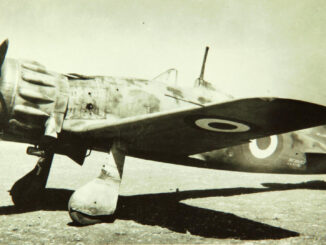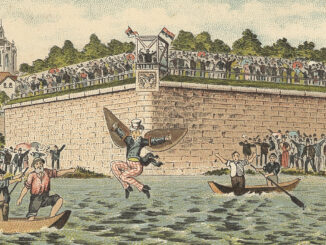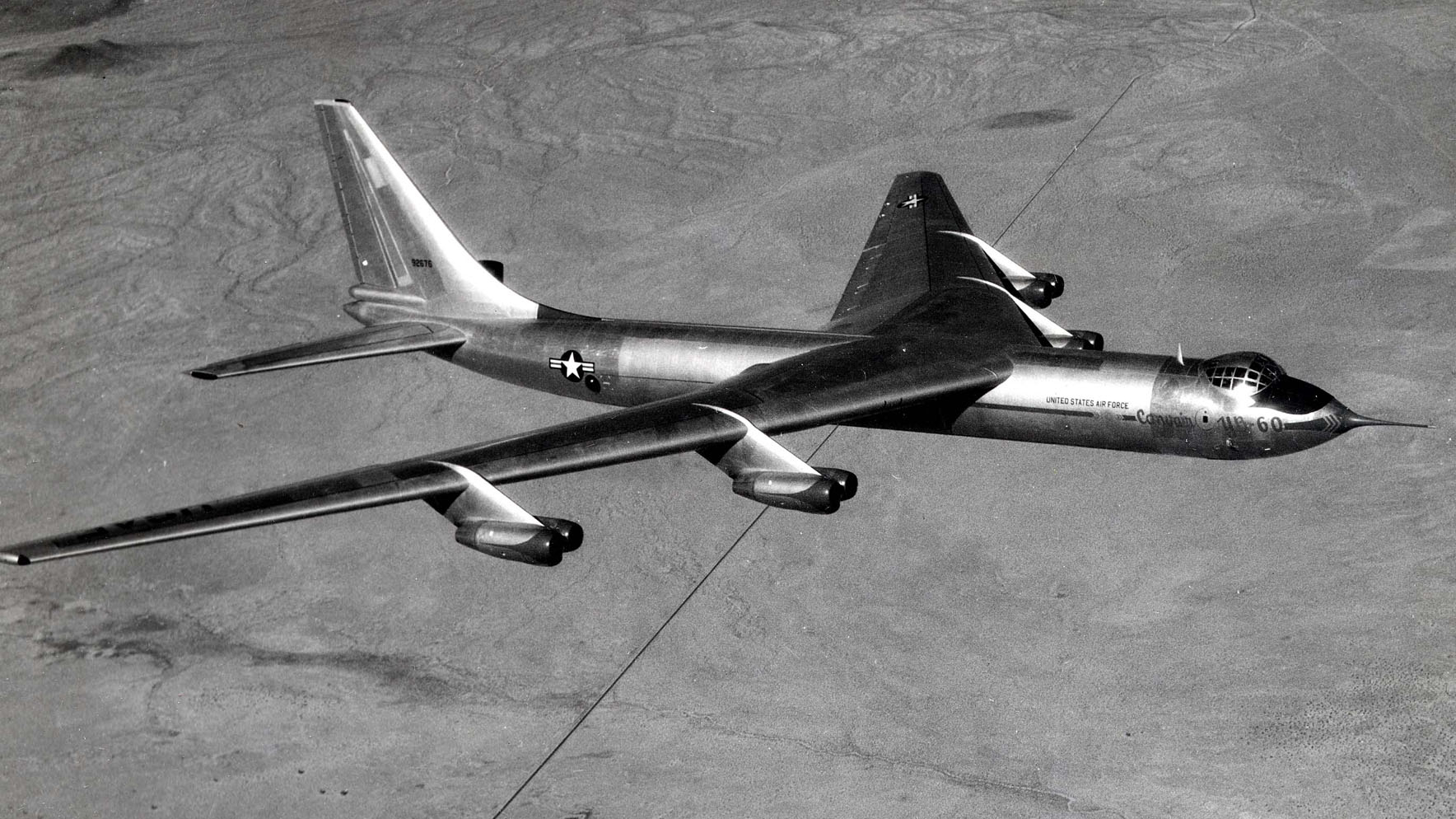 On 18th April 1952, prototype of Convair YB-60 long-range heavy bomber, successfully performed its maiden flight.
On 18th April 1952, prototype of Convair YB-60 long-range heavy bomber, successfully performed its maiden flight.
The story of YB-60 starts already in the early 1940s, when the US military authorities issued the first requirement for a long-range strategic bomber, able to perform transoceanic missions from the USA to Europe and then also Japan.
The outcome of those demands was the first American bomber capable of intercontinental flight without refuelling, as well as the largest serial-manufactured piston engine powered aircraft, Convair B-36 Peacemaker.
Initially, the B-36 was intended to enter service in the final stage of the World War II but the project suffered from several delays and prototype of the Peacemaker flew for the first time only in August of 1946. Two years later, the aircraft entered operational service with the United States Air Force.
Nevertheless, almost a year before the maiden flight of the B-36, the Air Materiel Command of the then United States Army Air Forces issued recommendations for the new strategic bomber, with its characteristics exceeding the supposed performance of the Peacemaker. A few months later, in February of 1946, the USAAF, announced an official bid for the new aircraft which was responded by three aviation manufacturers: Boeing, Martin and Convair – the company formed in 1943 by merge of Consolidated Aircraft and Vultee Aircraft (and initially known as Consolidated Vultee).
In the early 1950, Convair submitted its project of the intercontinental bomber to the USAF. It was met with interest and the company was authorized to make two prototypes of the aircraft. Initially, the project was known as B-36G but in a short time the prototype was re-designated YB-60.
The initial designation of the bomber, referring to the Peacemaker, was not a coincidence. The concept of YB-60 was based on the B-36 to such an extent, that it was commonly described as the jet-engine powered Peacemaker. In fact, the YB-60 used about seventy percent parts of its predecessor.
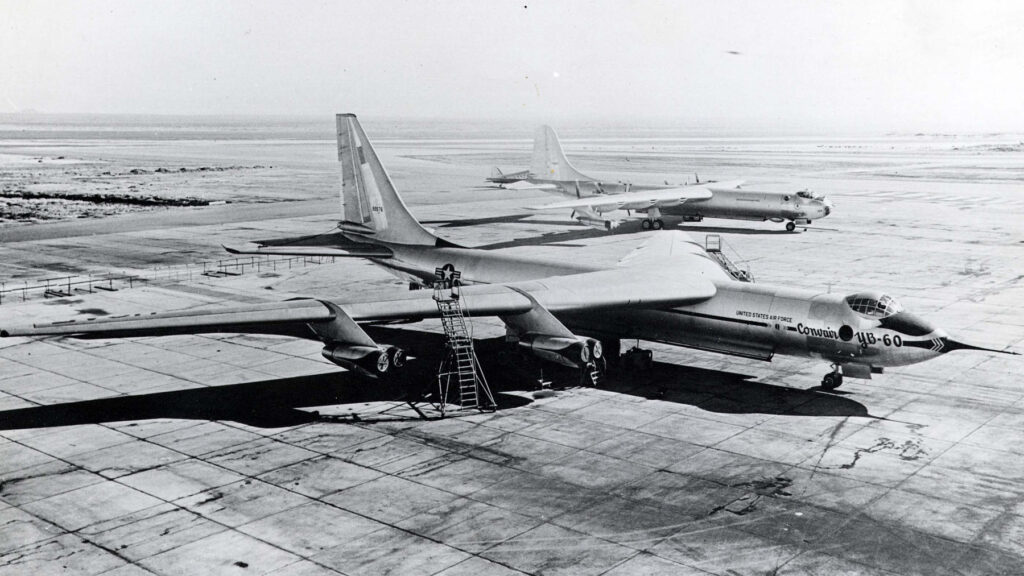
On 18th April 1952, the YB-60 performed its maiden flight. Evaluation programme of the aircraft lasted until the early 1953 and next year, the Convair project of the strategic bomber was officially approved by the USAF. However, it was the final stage of the testing programme as the YB-60 never entered serial production.
It was the Boeing aircraft that won the competition. Designated YB-52, the first prototype of the new USAF strategic bomber performed its maiden flight on 15th April 1952, just three days before the first flight of the YB-60.
Although the Boeing´s project came a really long way from straight-wing aircraft powered by six propeller engines to swept-wing bomber equipped with eight jet engines, it was finally considered more advanced than the YB-60.
In fact, the first order for thirteen examples of the B-52 Stratofortress, was placed by the USAF already in February of 1952 – even before the maiden flight of both competitors.
On 18th March of 1954, the first B-52A rolled-out from the factory and next year, the aircraft officially entered service with the USAF. Its modernised variants remain in service until today (and are expected to stay operational until the 2050s, a century after the first flight of the YB-52).
The YB-60 programme was officially cancelled in July of 1954 and both prototypes were scrapped shortly after.
Soon, a similar fate befell the B-36s – on 12th February 1959, the last Peacemaker was retired from active service and all but three of almost four hundred manufactured Convair bombers were disposed.
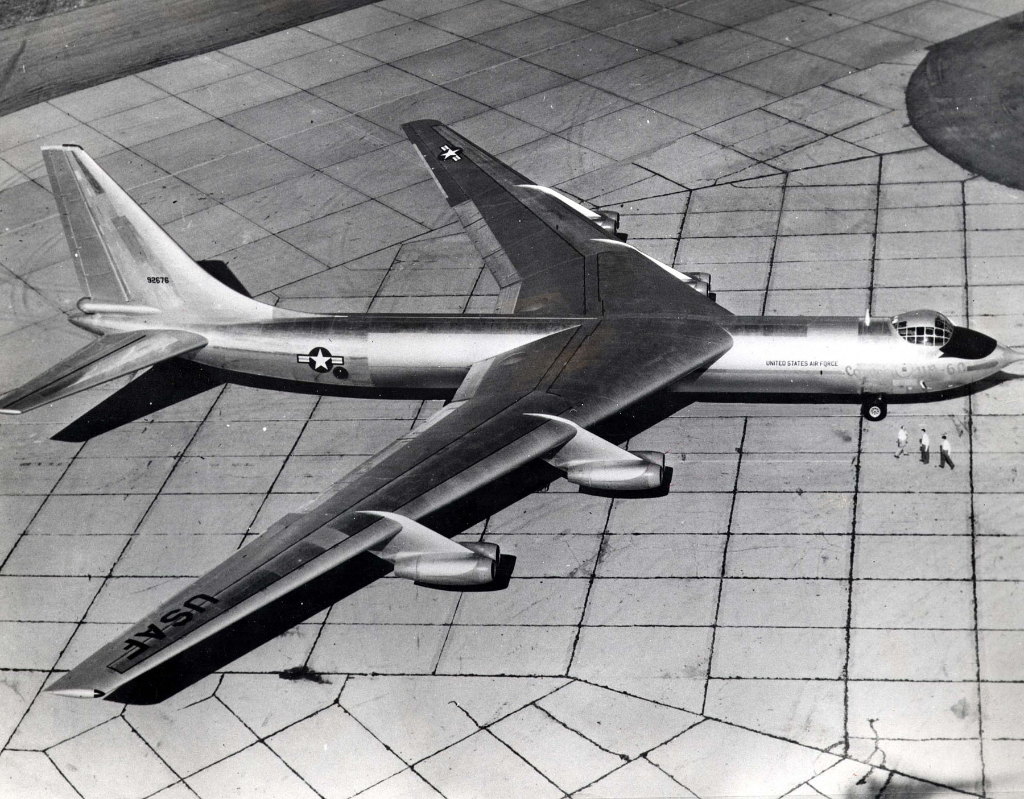
Cover photo: Convair YB-60 in flight (USAF photo via National Museum of the USAF, 061102-F-1234P-006, Public Domain)

